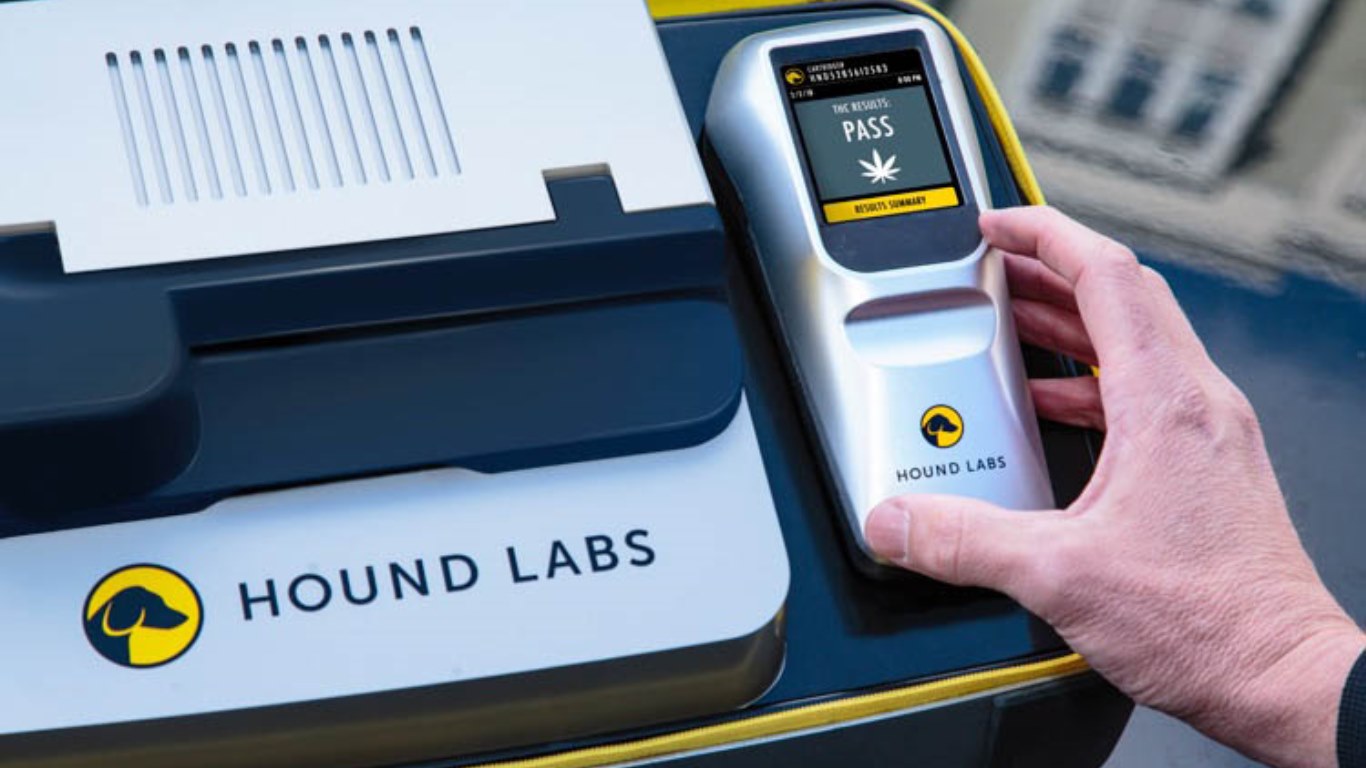Technology
Breathalyzer to Detect Marijuana Use Ramping Up Production

Published:
Last Updated:

Tests for marijuana use depend on a sample (urine, blood, saliva, hair), and the results of those tests indicate historical marijuana use. A small company in Oakland, California, has developed a breathalyzer that works like an alcohol breathalyzer to measure marijuana use within a three-hour window.
The company, Hound Labs, has completed two clinical trials of its device at the University of California-San Francisco (UCSF). Last February, UCSF researchers determined that the company’s breathalyzer could detect Δ9-tetrahydrocannabinol (THC, the psychoactive ingredient in marijuana) in concentrations as small as 1 picogram (a trillionth of a gram) up to three hours after smoking.
In a peer-reviewed article published in Clinical Chemistry in July, Dr. Kara Lynch, an associate professor of laboratory medicine at UCSF and co-director of San Francisco General Hospital’s clinical chemistry and toxicology laboratory, reported that THC “was detected in exhaled breath for all individuals at baseline through 3 h[ours] after cannabis use. THC concentrations in breath were highest at the 15-min[ute] timepoint (median = 17.8 pg/L) and declined to <5% of this concentration in all participants 3 h after smoking. The decay curve kinetics observed for blood and breath were highly correlated within individuals and across the population.”
The three-hour window during which the breathalyzer is able to detect marijuana use matches up with other studies that showed impaired behavior from marijuana users is at its peak within that same window. According to a National Highway Traffic Safety Administration report on the impact of marijuana on human performance, a single hit of marijuana smoke can carry about one-twentieth of a gram of THC, far more than the new breathalyzer needs to determine impairment.
In August, Hound Labs announced a $30 million Series D funding round, and the company said it plans to use the funds to “accelerate manufacturing and commercial availability.” Since its founding in 2014, the company has raised $73.1 million in funding, according to Crunchbase.
Marijuana is legal for recreational and medical use in 11 states and the District of Columbia. Only three of these states have a legal limit for the tested amount of THC in someone suspected of impaired driving. That limit is 5 nanograms (ng, billionths of a gram) in Colorado and Washington and 2 ng in Nevada.
Three other states where medical marijuana use is legal have established THC limits. Montana has set a limit of 5 ng, while Ohio’s limit is 2ng and Pennsylvania’s is 1 ng.
No other state, including California, has yet established a legal limit on how much THC constitutes a presumption of impaired driving.
Hound Labs is pitching its device to law enforcement departments and employers who need to know whether someone has been using marijuana very recently, not whether the substance was used days ago. One can imagine a delivery service, a trucking or construction company, or an airline requiring drivers, equipment operators and pilots to blow a clean test before hitting the road or the skies.
24/7 Wall St. recently issued its list of the 25 most dangerous drugs.
Thank you for reading! Have some feedback for us?
Contact the 24/7 Wall St. editorial team.